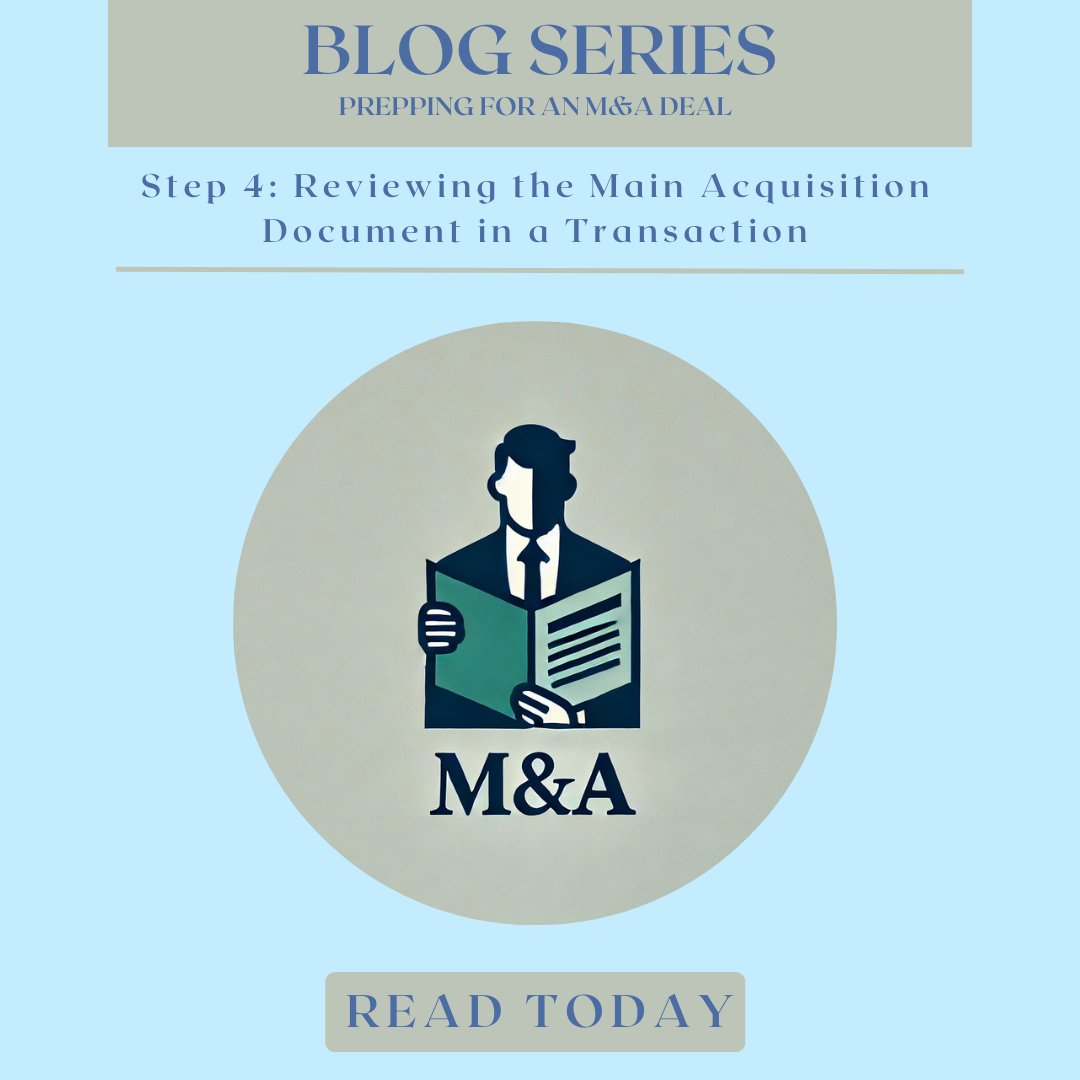Following the signing of the term sheet or letter of intent, the buyer’s counsel will prepare a draft of the main acquisition document, that is the Stock Purchase Agreement, Asset Purchase Agreement, or Merger Agreement. In this article, we will focus on the key components of SPAs and APAs in M&A transactions.
While there are some legalistic points that will be left primarily to negotiation among the seller’s counsel and buyer’s counsel, it is important for the parties to review and understand the main components of the SPA and APA to ensure a smooth M&A process and mitigate post-closing disputes.
Principal Commercial Terms of Sale
The first section of the SPA outlines the main commercial terms of the sale. This section requires careful review as it contains terms related to the purchase price. In most cases, the entire purchase price is not paid in cash at closing. Instead, part of it may be paid in the buyer’s stock, and various holdbacks and adjustments may apply. Sellers must understand these elements as they can significantly impact the final amount received.
Holdbacks in the SPA
Holdbacks address issues unresolved at closing, depending on the resolution of future events. For instance, there might be a holdback for environmental or tax liabilities. Funds are often held in escrow and released later, minus any payouts for liabilities. Another common holdback is for post-closing indemnity claims (see below). Sellers should carefully examine escrow terms and fund release dates.
Adjustments to Purchase Price
Price adjustments usually occur within 90 to 120 days after closing. The most common is the working capital adjustment. Since final financial statements are unavailable at closing, an estimated working capital is used. The parties agree on a target working capital amount to be left in the business at closing. Afterward, a reconciliation adjusts for differences between the target and actual amounts. Sellers should involve accountants and advisors to negotiate target amounts and reconciliations effectively.
Key Differences in the APA
The APA also details the principal commercial terms of the sale. Unlike the SPA, the buyer purchases the business’s assets rather than equity. The APA specifies included and excluded assets and liabilities. Sellers should thoroughly review these terms to avoid misunderstandings.
Key Components of SPAs and APAs in M&A Transactions: Representations and Warranties
The seller and buyer both make representations and warranties in the SPA or APA. However, the seller’s warranties are more extensive because the buyer assumes business risks. In an SPA, owners (shareholders) make the representations. In an APA, the business as the asset seller provides them, though the buyer may require additional representations from owners.
Seller’s Representations
Seller representations cover operational and legal matters, including the organization, financial statements, liabilities, material contracts, intellectual property, and compliance with laws. These representations serve two purposes:
- Due Diligence: Representations help the buyer identify potential issues. For example, a statement about outstanding litigation informs the buyer of risks.
- Post-Closing Liability: Sellers are liable for representation breaches, making accuracy and full disclosure critical. Sellers should consult counsel about limiting representations through knowledge or materiality qualifiers.
Covenants in SPAs and APAs
Sellers typically agree to covenants governing business operations between signing and closing. For example, they may promise to operate the business as usual. Restrictive covenants, such as non-compete and non-solicitation agreements, prevent sellers from competing with or soliciting employees from the business post-closing.
Indemnification in SPAs and APAs
Indemnification is one of the most negotiated sections. Sellers indemnify buyers for breaches of representations, warranties, and covenants. A portion of the purchase price is often held in escrow to cover claims.
Key Points of Negotiation
- Survival Periods: Determines how long liability lasts after closing.
- Baskets and Caps: Baskets set a minimum claim threshold, while caps limit maximum liability. These typically apply to representation breaches rather than other liabilities.
Final Thoughts on M&A Transactions
The SPA or APA is a complex document requiring detailed attention. Close collaboration with counsel and advisors ensures a smooth process. By reviewing and negotiating terms thoroughly, parties can reduce risks and achieve favorable outcomes.

